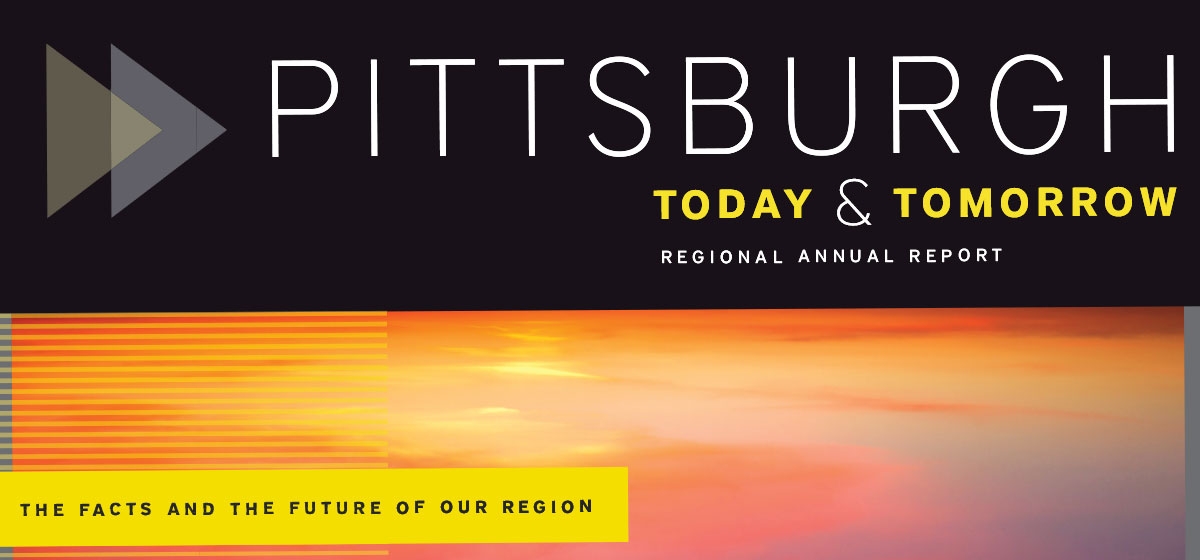Pittsburgh Today & Tomorrow

Would you say this is the best shape Pittsburgh’s been in over the last 30 years?” I asked the question after a group of people, including the region’s leading economist, its top demographic expert, and the head of the Allegheny Conference on Community Development, had just viewed the most recent economic reports from Pittsburgh Today. The answer was yes.
For those of us who’ve been here since the dark days of the mid-1980s, there’s a sense of redemption and pride in witnessing and/or having a hand in Pittsburgh’s turnaround. Did luck play a part? I remember in high school reading a newspaper profile of a Cincinnati bank president. The reporter asked Oliver Birckhead if he’d been lucky in his career. “It’s a funny thing,” Birckhead said. “When you work 16-hour days, you tend to get lucky.” And so, Pittsburgh indeed has been lucky.
There are different ways of viewing Pittsburgh’s reality today. One is to say “Job well done” and bask in the various rankings that place us at or near the top of the livability heap in American cities. And a strong case could be made that the work that’s been done will keep us in relatively strong shape for years. That is, because of our diversified economy, intellectual assets and philanthropic might, we likely can’t deteriorate as rapidly as so many of our peer cities (Cleveland and Detroit, among others).
Cities do have momentum. Pittsburghers know that firsthand. The period of innovative and industrial brilliance to which we so often refer back—the apex of Carnegie, Frick, Heinz, Mellon and Westinghouse—was relatively brief, roughly from 1885 to 1915. But the businesses, wealth and institutions created then were of such scope that they carried Pittsburgh for another 60 years.
Things are different now, though, and I suspect we can’t count on our current momentum to carry Pittsburgh for long. The world is simply too mobile and changes too fast. In that context, a second way of viewing Pittsburgh’s future is to consider ourselves fortunate to be in a position of relative strength and to seize the opportunity to build from here. As our annual report on the state of the region—”Pittsburgh Today & Tomorrow”—shows (beginning on page 67), Pittsburgh is a work in progress, not a work complete.
With passage of a transportation bill in Harrisburg last fall, transit and bridge repair are no longer in crisis, but dramatic room for improvement in transit and air travel destinations remains. Attracting more immigrants and greater diversity is necessary to ensure a strong workforce. Improving the quality of our air and the water in our streams and rivers are key challenges for our health and the region’s long-term attractiveness. And we cannot afford the continued failure of so many in our public schools.
Having said that, Pittsburgh’s strengths dwarf its problems. Our economy is diversified, powered by energy, education, medicine, finance and (still) manufacturing. Our social problems are smaller and more solvable than other regions’. And from the arts to sports to the outdoors, our amenities are strong. Above all of those assets, though, the key to Pittsburgh’s future will be innovation.
Pitt Provost Patricia Beeson is right on the mark in creating the Innovation Institute. We need it in government, industry, education, healthcare and protecting the environment. And if we invest in innovation, we’ll put greater distance between Pittsburgh and other regions.
The good news is that we have the raw materials. With Pitt, UPMC and Carnegie Mellon, among others, we have a garden with the richest soil for innovation in the world. In Pittsburgh, we’re on the verge of the best of times. Yes, we have to be up to the task. But as opposed to the last 30 years, for the next 30, we’ll be playing from strength.

